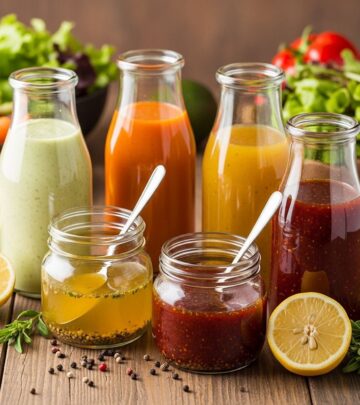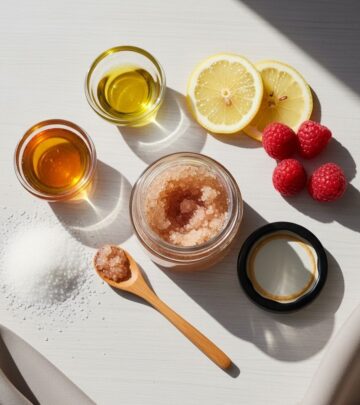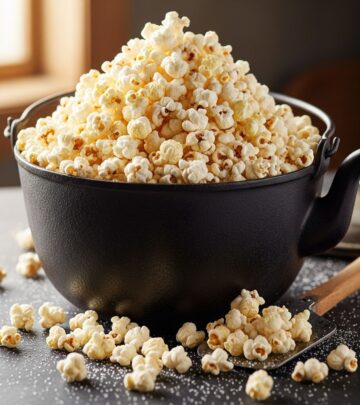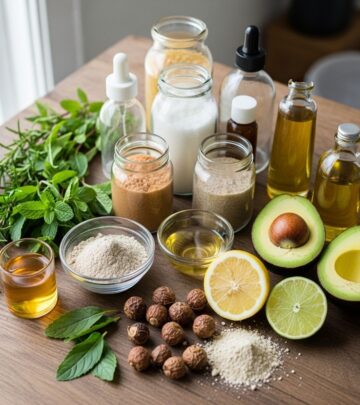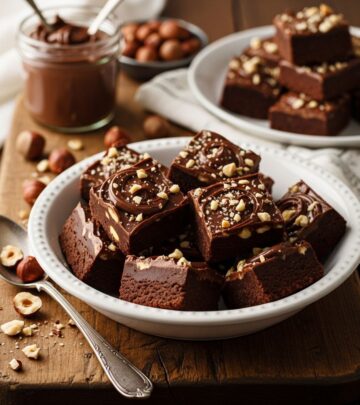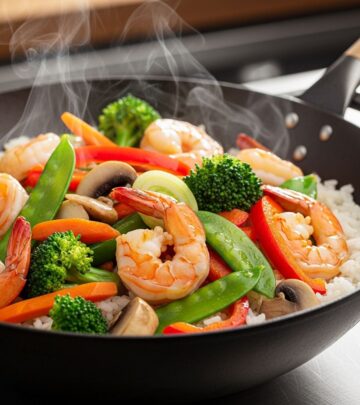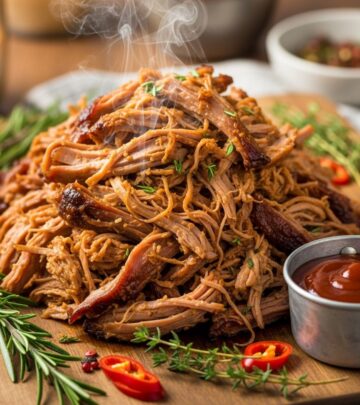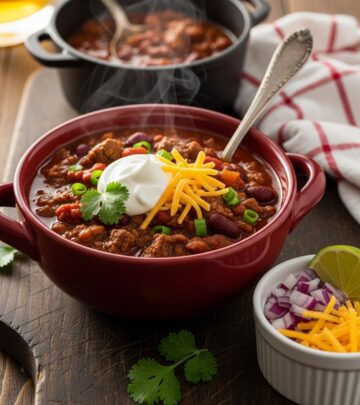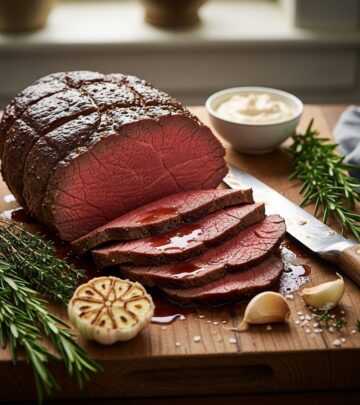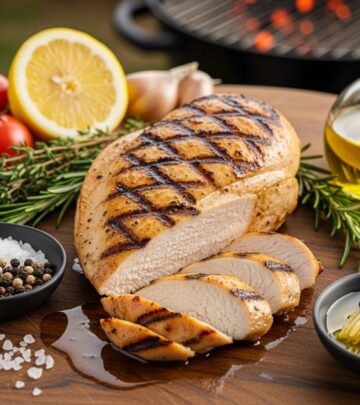Classic Homemade Gnocchi: Tender Italian Potato Dumplings
Foolproof shaping and cooking tricks yield pillow-light bites that cling to every sauce.
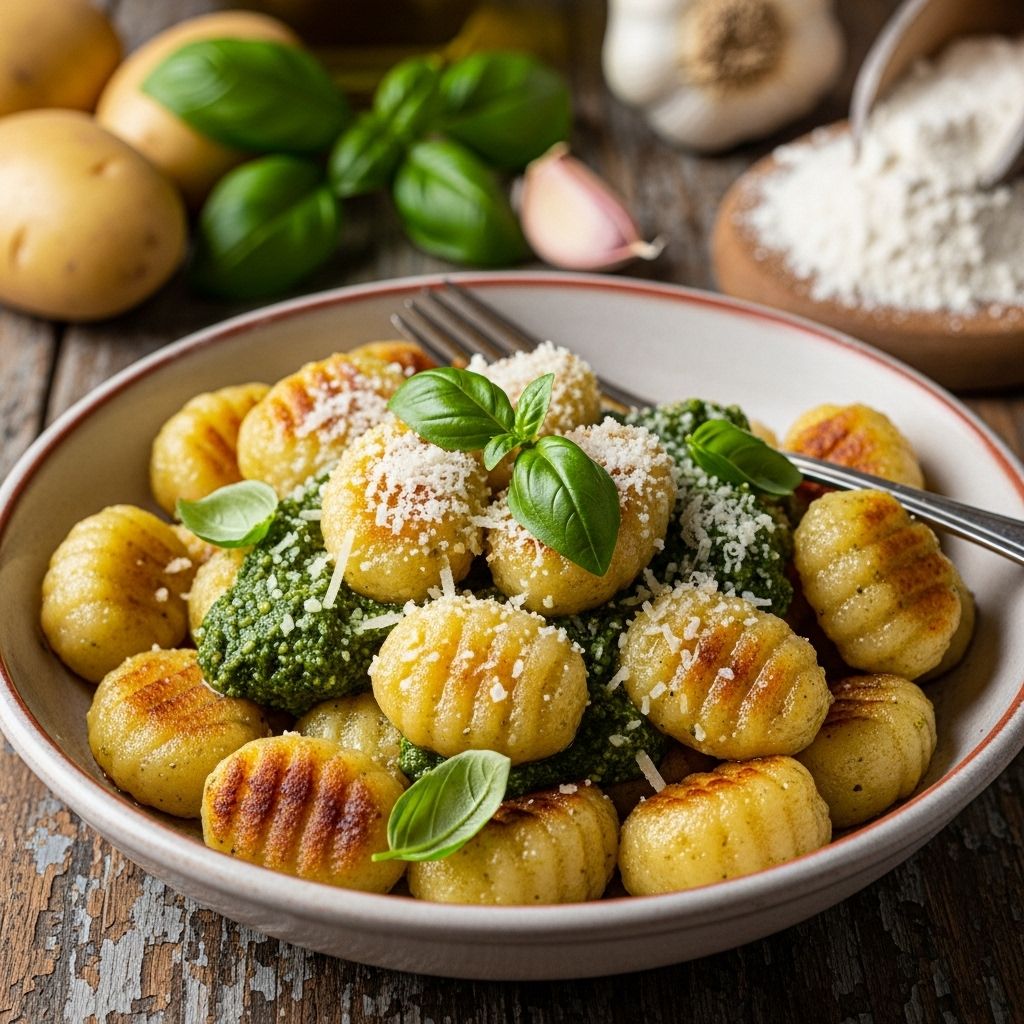
Image: HearthJunction Design Team
There are few Italian dishes as comforting and satisfying as homemade gnocchi. These soft, pillowy dumplings, a staple in many Italian households, turn simple ingredients into a truly special meal. Whether served in a rich tomato sauce, sautéed with butter and fresh herbs, or tossed with pesto, freshly made gnocchi stands apart from any store-bought variety. In this guide, you’ll learn everything you need to know to master classic potato gnocchi from scratch.
What Is Gnocchi?
Gnocchi (pronounced NYOW-kee) are small Italian dumplings traditionally made with potatoes, flour, and eggs. Eaten across Italy, they come in many regional variations, but the most popular version is the simple potato gnocchi. Their neutral flavor and tender texture make them the perfect canvas for all kinds of delicious sauces.
Gnocchi Origins and Tradition
The word “gnocchi” derives from the Italian word nocchio, meaning a knot in wood, or from nocca, meaning knuckle. Gnocchi has been a part of Italian cuisine since at least Roman times, though the modern potato version became prevalent after potatoes were brought to Europe from the Americas.
- Classic Version: Made with potatoes, flour, eggs, and salt.
- Regional Variations: Includes ricotta gnocchi, pumpkin gnocchi, and those using semolina or even stale bread.
- Traditional Sauces: Tomato sauce, sage butter, pesto, or creamy cheese sauces.
Gnocchi Pronunciation
“Gnocchi” can be a tricky word for English speakers. For reference, it is pronounced: NYOW-kee.
Ingredients for Homemade Gnocchi
To make classic potato gnocchi, you only need a handful of ingredients. Each plays a vital role in achieving the perfect texture and flavor:
| Ingredient | Role | Tips |
|---|---|---|
| Russet Potatoes | Provide starchiness and structure | Use starchy, dry potatoes for light gnocchi |
| All-Purpose Flour | Binds the potatoes, creates texture | Add gradually to prevent tough dough |
| Egg | Adds moisture and binds ingredients | Use one large egg for best results |
| Kosher Salt | Enhances overall flavor | Season the dough and the boiling water |
Step-by-Step Guide: How to Make Gnocchi
Making gnocchi at home is easier than you might think. Follow these steps for tender, fluffy results every time:
Ingredients
- 3 medium russet potatoes, scrubbed
- 1 1/2 cups all-purpose flour (plus extra for dusting)
- 1 large egg
- 1 teaspoon kosher salt
Instructions
- Boil the Potatoes: Place whole, unpeeled potatoes in a large pot of cold, salted water. Bring to a boil and cook until fork-tender (about 40 645 minutes).
- Peel and Mash: Drain and let cool just enough to handle. Peel potatoes while hot and use a potato ricer or masher to mash them onto a clean surface.
- Make the Dough: Spread the warm potatoes into a thin layer and allow steam to escape. Sprinkle with salt. Add flour and make a well in the center for the egg. Lightly beat the egg, then incorporate it into the potatoes and flour using a bench scraper or your hands. Gently knead until the dough is just combined. It should be soft 6not sticky or tough.
- Shape the Gnocchi: Divide dough into 4 pieces. Roll each piece into a long rope (about 3/4-inch thick). Cut each rope into 1-inch pieces. If desired, roll each piece along the tines of a fork or a gnocchi board to create ridges for holding sauce.
- Boil: Bring a large pot of salted water to a boil. Gently add gnocchi in batches. Cook until they float (about 2 3 minutes), then remove with a slotted spoon.
- Serve: Serve immediately with your favorite sauce, or sauté briefly in butter for extra flavor.
Tips for Perfect Gnocchi
- Use Starchy Potatoes: Russet or Idaho potatoes work best because of their high starch content and low moisture.
- Handle Gently: Overworking the dough develops gluten, making gnocchi tough.
- Don’t Overdo the Flour: Use just enough flour for a cohesive dough. Too much will result in dense dumplings.
- Work Quickly: Process potatoes while they’re hot for a light texture.
- Dust Well: Lightly dust your work surface with flour to prevent sticking—but shake off excess before boiling.
Serving Suggestions
These dumplings are a blank canvas for a range of sauces and toppings. Here are a few classic ways to enjoy gnocchi:
- Tomato Sauce: Simmer gnocchi in rich marinara, then top with grated Parmesan and fresh basil.
- Pesto: Toss with homemade basil pesto and finish with toasted pine nuts.
- Sage Brown Butter: Sauté cooked gnocchi in butter with fresh sage until golden.
- Cream Sauce: Serve with a creamy Alfredo or Gorgonzola sauce and cracked black pepper.
Storing and Reheating Gnocchi
- Make Ahead (Uncooked): Arrange uncooked gnocchi on a floured baking sheet and freeze. Once solid, transfer to a freezer bag. Boil straight from frozen, adding an extra minute or two of cooking time.
- Cooked Gnocchi: Store leftover cooked gnocchi in an airtight container in the refrigerator for up to 3 days. Reheat in a sauté pan with a splash of water or extra sauce.
Frequently Asked Questions (FAQs)
Q: Can I use other types of potatoes for gnocchi?
A: Starchy potatoes like russet or Idaho are recommended for best results. Waxy varieties (such as red or Yukon Gold) have higher moisture and can make the dough sticky and dense.
Q: My dough is too sticky. What should I do?
A: Add a bit more flour, a tablespoon at a time, just until the dough is workable. Avoid adding too much, or the gnocchi will be heavy.
Q: Is it possible to make gnocchi without egg?
A: Yes, although the egg helps bind the dough and adds richness. If omitting, be extra gentle when forming the dough and consider using a little extra flour if needed.
Q: Can I freeze gnocchi?
A: Absolutely! Freeze gnocchi in a single layer until firm, then store in freezer bags for up to two months. Boil from frozen for best texture.
Q: How do I keep gnocchi from falling apart in the water?
A: Make sure your dough isn’t too soft or under-floured, and don’t overcrowd the pot. Scoop them out as soon as they rise to the surface.
Simple Gnocchi Variations
- Ricotta Gnocchi: Substitute ricotta cheese for potatoes for a lighter, fluffier dumpling. Skip the boiling and use a slotted spoon to remove from water as soon as they rise.
- Herb Gnocchi: Add finely chopped fresh herbs (such as basil, parsley, or chives) to the dough for added flavor.
- Spinach Gnocchi: Incorporate cooked and well-drained spinach for a colorful twist.
Nutrition Information
| Serving Size | About 1 cup gnocchi (without sauce) |
| Calories | ~250 |
| Protein | 6g |
| Fat | 1g |
| Carbohydrates | 53g |
| Fiber | 3g |
*Nutritional values may vary depending on the flour, potatoes, and additional ingredients used.
Expert Tips for Homemade Gnocchi Success
- Allow potatoes to cool slightly and steam to escape before mixing the dough—excess moisture makes sticky gnocchi.
- For extra tender gnocchi, use a potato ricer instead of a traditional masher.
- Don’t skip the ridges! Rolling gnocchi on a fork or gnocchi board helps sauce cling for more flavor in every bite.
- Test-batch a few dumplings in boiling water before shaping the entire batch. Adjust flour as needed for the right consistency.
Final Thoughts
Making classic potato gnocchi at home is a rewarding kitchen project. With a little practice, you’ll enjoy impossibly light, flavor-packed dumplings that transform basic ingredients into an unforgettable meal. Experiment with sauces, try different variations, and savor the authentic taste of Italy at your own table.
References
Read full bio of Anjali Sayee

